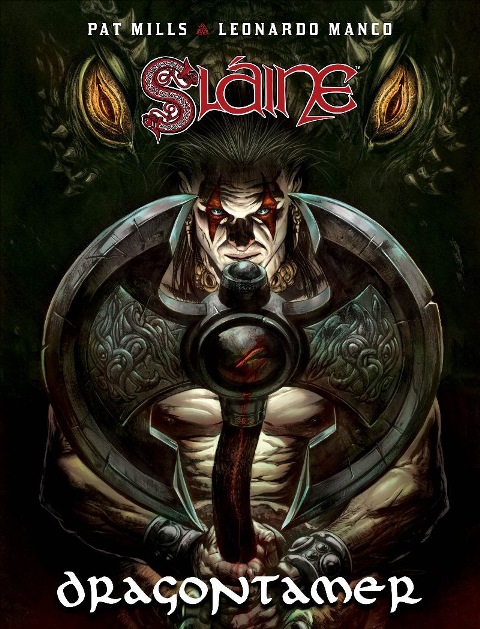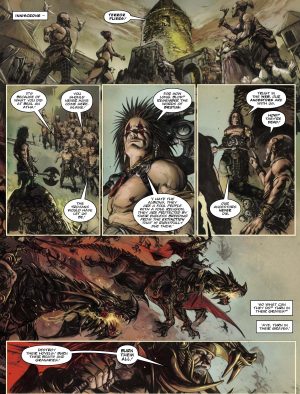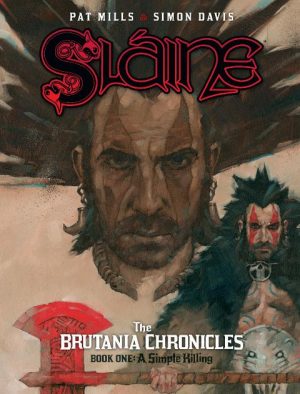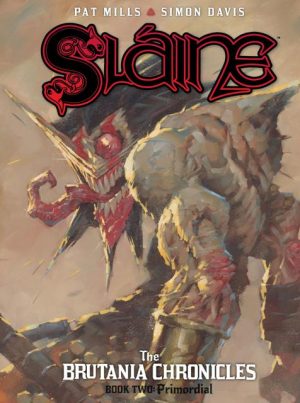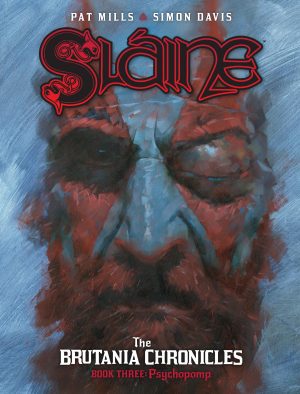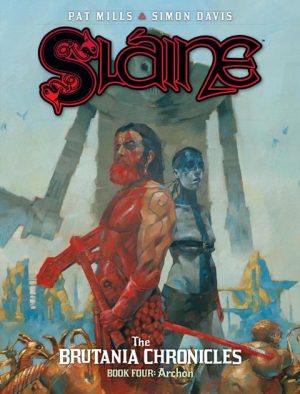Review by Jamie McNeil
Introduced in The Brutania Chronicles, Emperor Brutus and his invading Trojans hold sway over Albion by right of conquest, subjugating the native peoples of the Land of the Young by harnessing terrible dragons. A prophecy claims that Brutus will build an Empire to enslave the world, one that time will never destroy nor bounds confine. One man will resist and march straight into New Troy, no matter the armies arrayed before him. He will not count them too many because he is Sláine mac Roth, mac Macha and mac Duban, the once High King, the Green Man and the Horned God. Many a head will be severed with vigour and hate for he is imminently severe in works of violence!
In 1981 writer Pat Mills had an idea for a series based on the Celtic legends. His then wife, illustrator Angie Kincaid drew a Celtic warrior brandishing an axe and so Sláine was born. It would be two years before his first adventure ‘The Time Monster’ (see Warrior’s Dawn) drawn by Kincaid featured in the fledgling British comic 2000AD, her work became the blueprint for future artists.
Massimo Belardinelli would build on that blueprint, introducing Sláine’s warp-spasm in what is still an outstanding bit of fantasy-horror art. Mike McMahon would add scope to the cities and cultures, Glenn Fabry a range of still recognisable facial and bodily expressions while Simon Bisley gave Sláine his now distinctive look. Each of the many artists to work on the series in its forty year history has added something to the legend. It is to that legacy that artists Leonardo Manco, Chris Weston and Kyle Hotz pay tribute in Sláine’s final adventure Dragontamer.
Manco’s clean detailed art is strewn with homages the knowledgeable fan could point to, the most notable resemblance to the late Belardinelli’s art on ‘Dragonheist’ (see Time Killer). He employs clean lines and dynamic action on some impressive dragon battles. You can also see Belardinelli’s influence on Manco’s rendering of Sláine’s warp spasm, all grotesquely twisted, and Sláine’s appearance clearly tributes Bisley’s work on The Horned God. Manco’s changing perspectives adds depth and he can illustrate a small silhouette as effectively as a dragon spanning multiple panels. Not only does he imitate a number of styles that are classic to the series, he improves on them.
Hotz brings his flair for horror to ‘The Lord Weird Slough Feg: Lord of the Hunt’, surprisingly good in inks if you have only seen his work in colour, and possibly the first American to work on the series. It’s a different perspective on early series events, Hotz rendering some fine black and white work. Chris Weston uses black and white in a more classic early Sláine style to revisit the dwarf Ukko’s origins in ‘Bogatyr’. Redolent of Fabry’s work, it stands out for capturing both Sláine’s and Ukko’s mannerisms.
Dragontamer’s art is the highlight and fitting for a finale, capturing the essence of Sláine both old and new. Pat Mills supplies good solid writing, providing some commentary on the British psyche and continuing to explore Sláine’s character development. He sticks to the working formula developed over forty years, in some ways comfortingly predictable yet somehow finding something fresh to surprise. Still, Mills’ greatest talent remains an ability to allow the artist to tell the story and Leonardo Manco has the skill to do so. The ending is left open in the tradition of the Celtic Cycles so Sláine could return under a new writer, yet either way this is a solid finish for both creator and creation.
